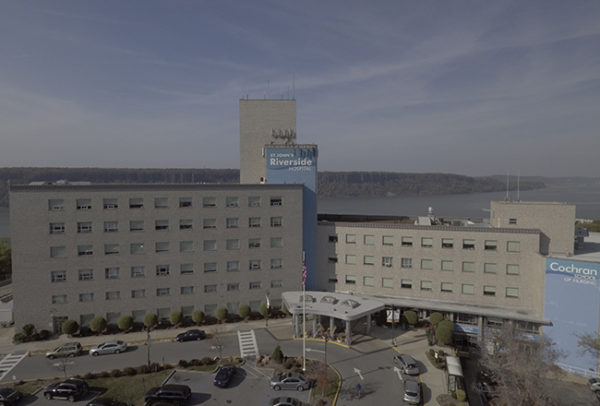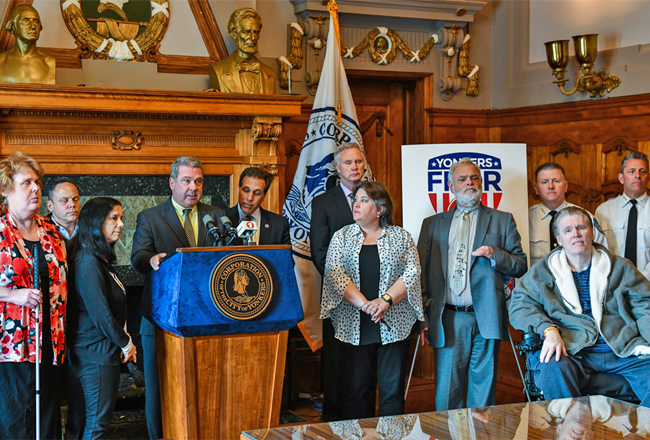One the last two independent community hospitals standing in Westchester County will seek a partnership with a larger health network.
St. John”™s Riverside Hospital, a 378-bed hospital based in Yonkers, announced March 28 that it’s on the hunt for larger institutional backing.
Shifts in the health care industry since the implementation of the Affordable Care Act have seen major hospital networks such as Montefiore, NewYork-Presbyterian and Northwell Health scoop up almost all of Westchester”™s hospitals through purchases or affiliation agreements. Westchester Medical Center, meanwhile, has boosted its network through affiliation and purchase agreements of its own in the Hudson Valley.
With the dust mostly settled, only two Westchester community hospitals, St. John Riverside Hospital and its Yonkers neighbor Saint Joseph”™s Medical Center, still operate independently.
 But St. John”™s CEO Ron Corti said that after 150 years of independent operation, it”™s time the hospital pursue a new chapter for its 2,000 employees and physicians.
But St. John”™s CEO Ron Corti said that after 150 years of independent operation, it”™s time the hospital pursue a new chapter for its 2,000 employees and physicians.
“Today, the cost of health care has escalated while government reimbursement for Medicare and Medicaid patients has dropped precipitously,” Corti said in a statement released by the hospital. “Additionally, insurance companies have increased denial rates for payment after we have rendered excellent patient care.”
The hospital issued in March a request for proposals to major health care systems to explore a partnership arrangement. Responses are due by April, but the hospital said the process could take between two and three years to finalize. The state Department of Health would also have to approve any arrangement.
St. John”™s Riverside Hospital is spread among four main facilities: the 225-bed Andrus Pavilion in Yonkers, the 141-bed Park Care Pavilion about 2 miles south; a 12-bed pavilion in Dobbs Ferry and a 15,000-square-foot lease at the Boyce Thompson Center in Yonkers, the mixed-use medical and retail campus from Simone Development Cos.
The Andrus facility is the flagship, offering emergency services, cancer care, a state-designated stroke care center and the only maternity services in Yonkers, along with a range of other inpatient and outpatient services. The Park Care Pavilion provides inpatient and outpatient services, substance abuse care and is a state-designated AIDS Center. The Dobbs Ferry facility provides inpatient and primary care, as well as ambulatory surgery and emergency services. The Boyce Thompson facility has outpatient services and doctor”™s offices.
The hospital estimates it treats about 250,000 patients annually. St. John”™s is a designated “Essential Community Provider” by the state, meaning it serves predominantly low-income individuals.
The hospital also includes the Cochran School of Nursing, the oldest hospital-based nursing school in the New York Metropolitan region. The school is based within St. John”™s main hospital campus and enrolls about 90 students per year.
The hospital system reported a $7.3 million loss in 2015 and a $7.4 million loss in 2016, according to federal tax filings.
Comparing its 2016 tax filings with its 2011 filings illustrates the growing strain on the hospital”™s finances. The hospital reported a net income of $18 million in 2011, according to federal filings. Its incomes have dropped steadily since. That year, the hospital brought in about $259 million in revenue and had $241 million in expenses.
In 2016, the hospital brought in about $243 million, according to tax filings, down about 6 percent from 2011. Meanwhile, its expenses totaled $251 million, up about 4 percent from 2011.
The hospital acknowledged its negative margins in the announcement, which it blamed on reimbursement denials, uncompensated care and rising costs.
Along with insurance companies denying payment for care, Corti said a shift among employers to health plans”™ high out-of-pocket costs has left a growing number of patients unable to pay for medical care.
“Yet the hospital treats them, which amounts to a price cut for us,” Corti said. “So, the combination of all this, plus an aging population that requires more specialized and consistent care, and the increased cost of new technology, makes our current hospital business model unsustainable.”
St. John”™s spokesperson Denise Mananas declined to comment on any specific potential suitors, but said the hospital will seek a “sound economic partner who can bring something to the table with leverage in this market.”
St. John”™s Hospital already has a clinical affiliation with the Montefiore Health System through which it collaborates on some larger Montefiore health care initiatives, but not any official network affiliation.
The partnership process will take some time. Even after it has found the right partner and negotiated the structure for its partnership, St. John”™s said it could take another five years to fully integrate the hospital”™s systems.
“Fortunately, we”™re in a position that affords us the time to identify the best pathway forward as we look to serve our 2,000 physicians and employees, patients, and our community ”“ long into the future,” Cor






















